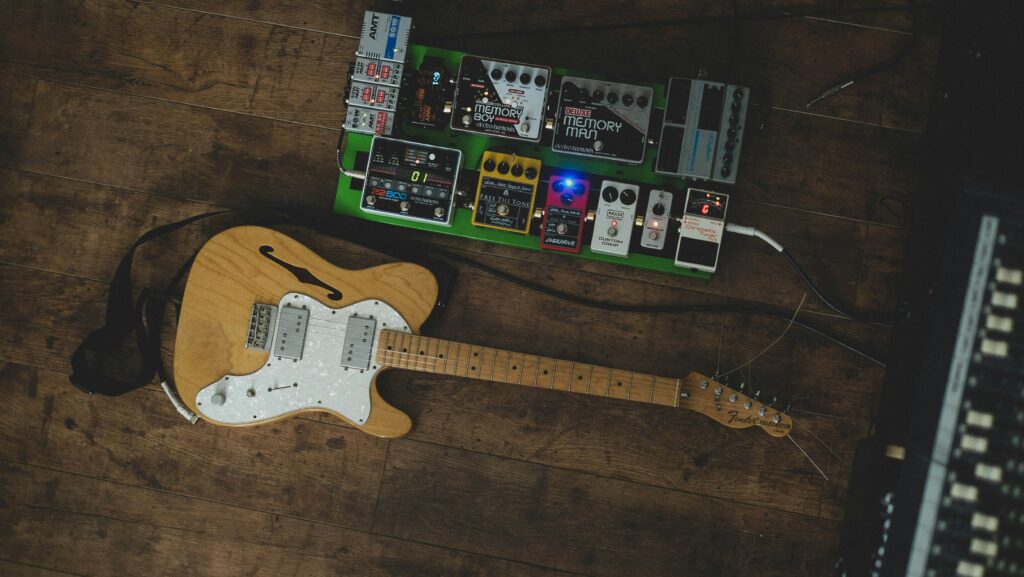
One of the biggest challenges that guitar players face when setting up their pedalboards is how to power their pedals. Even while some of your pedals may come with batteries, this is never an ideal way to power a pedal, and those that don't have batteries will need some other source of power in order to deliver the sweet tone you're looking to create. So, just how do you set up a pedal board power supply?
Well, setting up a pedalboard power supply is actually pretty easy. All it takes is a bit of planning and the right power supply for your specific situation. However, there are plenty of options to choose from, making finding the perfect one for you essential. So, if you're setting up a new pedalboard and want to make sure that your power supply is ready to go every time you play, here is everything you need to know about how to set up a pedal board power supply.
There are essentially two different ways that you can power the effects pedals on your board, both of which come with their own advantages and disadvantages. However, while both of these options may work for you either way, it's crucial that you understand a bit more about each before you make your decision. So, before you go out and buy anything, here is a short overview of each option that you have and why you might want to choose one over the other.
Daisy chains are a popular choice among beginners and guitarists who use only a few pedals, and for good reason. They make things as simple as possible by allowing you to make one long power cable that you can use to power multiple pedals. The only problem is that, while daisy chains are both easy to set up and inexpensive, they do have their drawbacks.
Firstly, daisy chains aren't great at providing an equal amount of power to each pedal, which can cause problems that get worse the longer the chain gets. They also tend to make a lot of noise compared to isolated power supplies, and because all your pedals are connected to the same wire, an unexpected power surge has the potential to fry every pedal in the chain. All of this means that you should probably consider other options when setting up your pedal board.
Isolated power supplies, on the other hand, are a much higher quality solution to power your pedals. These types of power supplies usually look like nothing more than a small box with a bunch of built-in power supplies, and essentially, that is what they are. However, it's what’s inside that box that really makes the difference.
Instead of connecting all your pedals in one long chain, isolated power supplies isolate each pedal, ensuring that every pedal receives the right amount of power and that power surges won’t be an issue. This also drastically reduces the amount of background noise that makes its way into your signal, giving you the cleanest signal and tone possible.
Before you go out and buy your new power supply, there are a few other things that you should consider.
The first thing you need to think about is how many pedals you need to power. Daisy chains can only stretch so far, and isolated power supplies only come with a set number of outputs, so you’ll need to count up your pedals and ensure that the power supply that you choose is actually up to the task.
Another thing to consider is pedal voltage. While the vast majority of pedals require a 9-volt power supply, there are also plenty of pedals out there that use 12 and 18 volts. If you have any of these pedals, you simply won’t be able to use a daisy chain. Instead, you’ll need to find an isolated power supply that includes outputs with the right voltages for your pedals.
Once you have your ideal power supply, it’s time to set it up. However, the process of doing this will vary depending on which power supply you choose.
If you go the daisy chain route, all you’ll need to do is connect your daisy chain cable to the power supply. Then, simply plug each output of the daisy chain into each of your pedals. You’ll also need to cover any spare outputs on your cable with either the caps that come with the chain or electrical tape. Other than that, all you need to do is plug in and play.
Isolated power supplies require a bit more planning. First, you’ll need to decide where you want to put the power supply on your board. These power supplies can take up a lot of valuable space, but many guitarists choose to either put them at the top of the pedal deck behind all their pedals or, if possible, under the board to save space on the pedal deck.
Once you’ve found a good spot, all you’ll need to do is plug your pedals into the correct outputs on the power supply, plug the power supply in, and start playing.

Are you in the market for a new pedalboard? Do you want to make sure that the Pedalboard you choose meets all your guitar playing needs? Then contact Pedal Pad!
Pedal Pad specializes in building high-quality custom pedalboards that their customers can fine-tune to meet their specific needs and preferences. All you have to do is call or place an order online, and you’ll be able to design your new pedalboard from the ground up, giving you complete freedom to include any extra features that you may need. So, don’t settle for some boring, mass-produced board when you don’t have to. Contact Pedal Pad and start building your new dream board today!